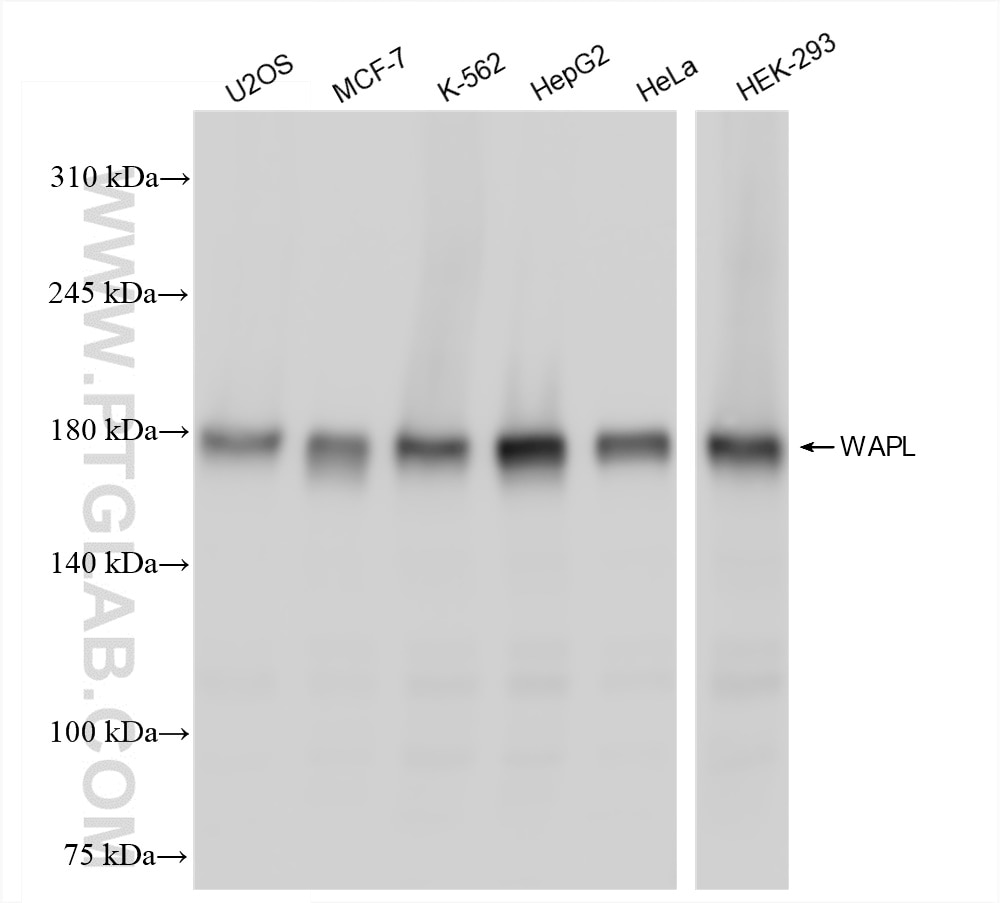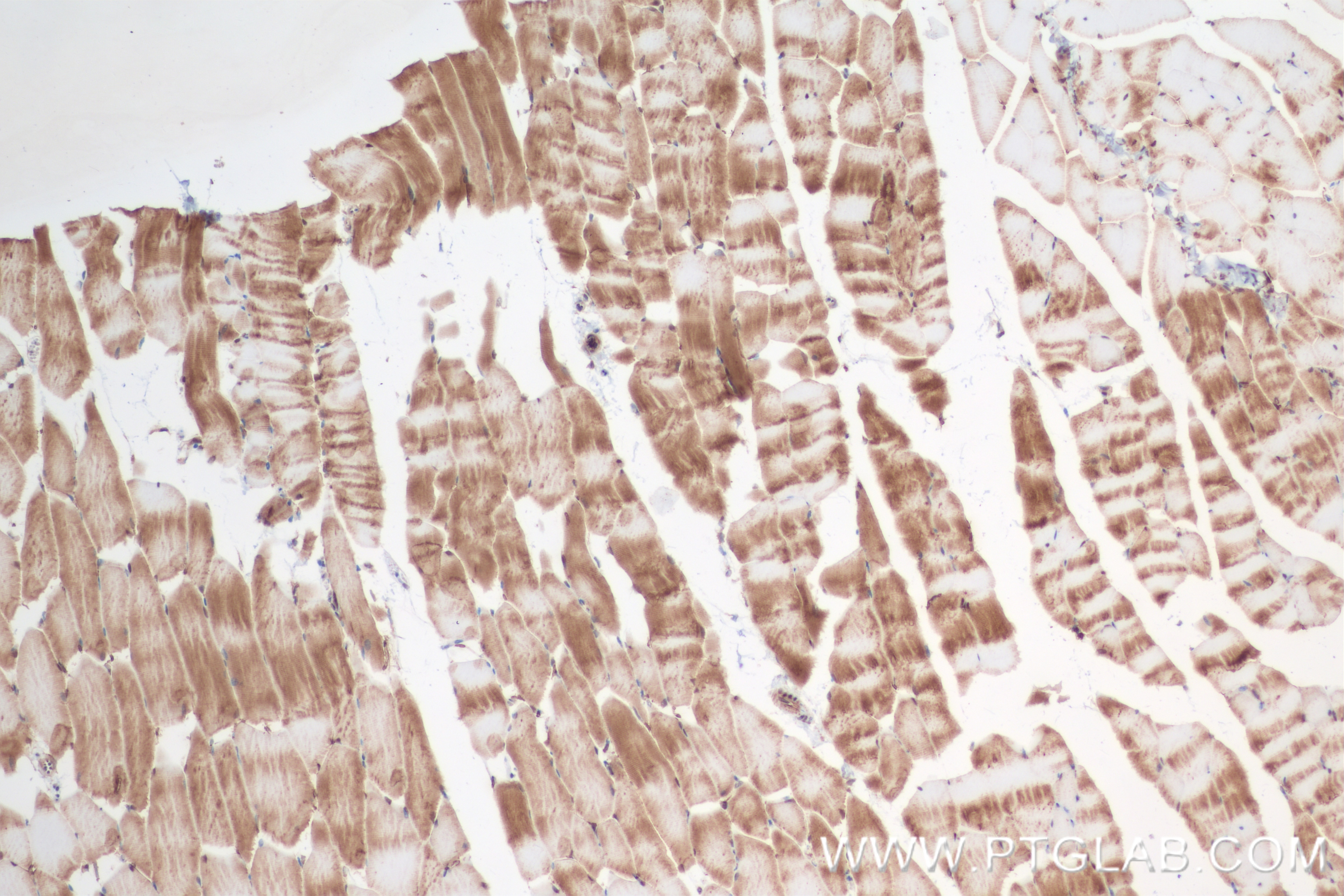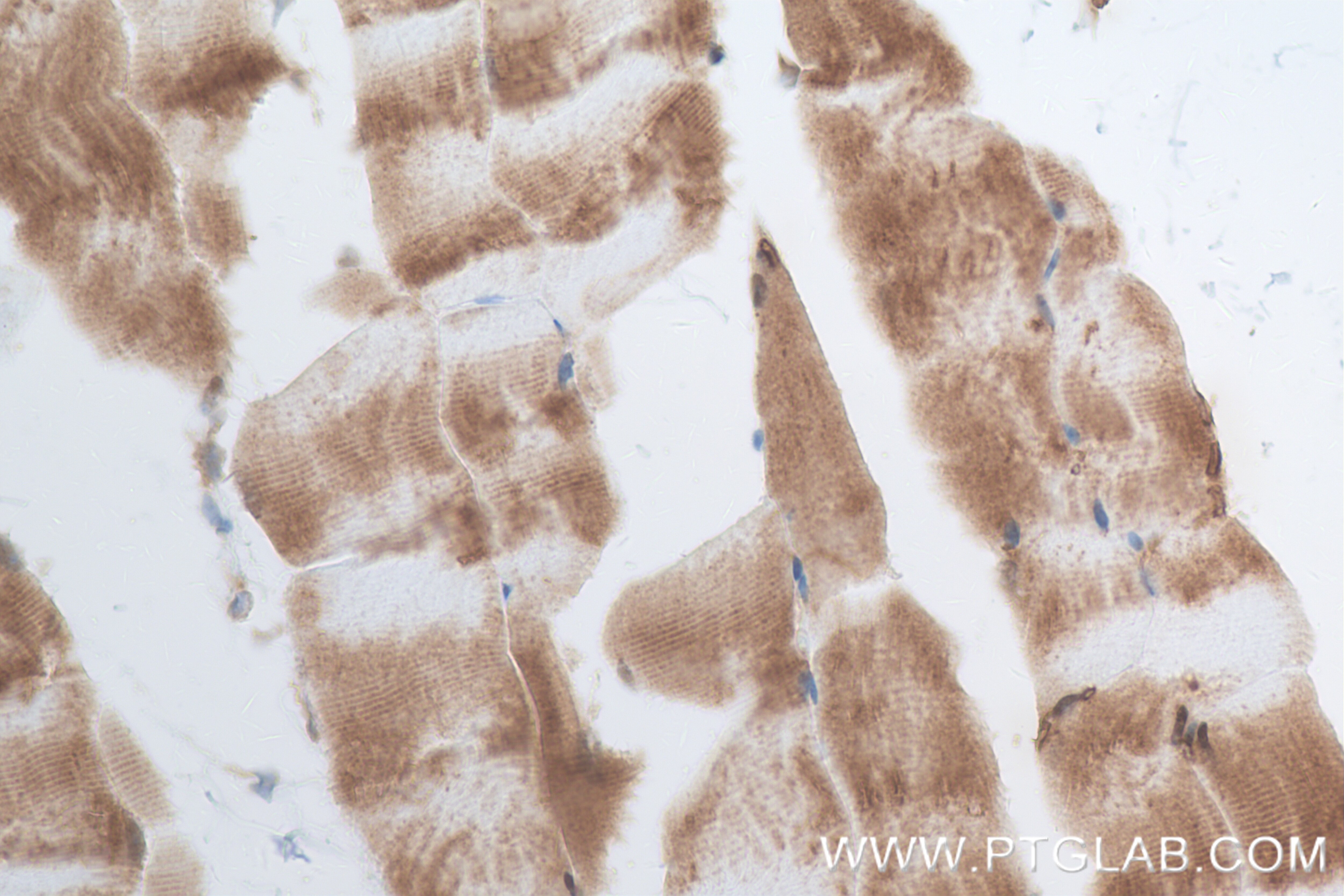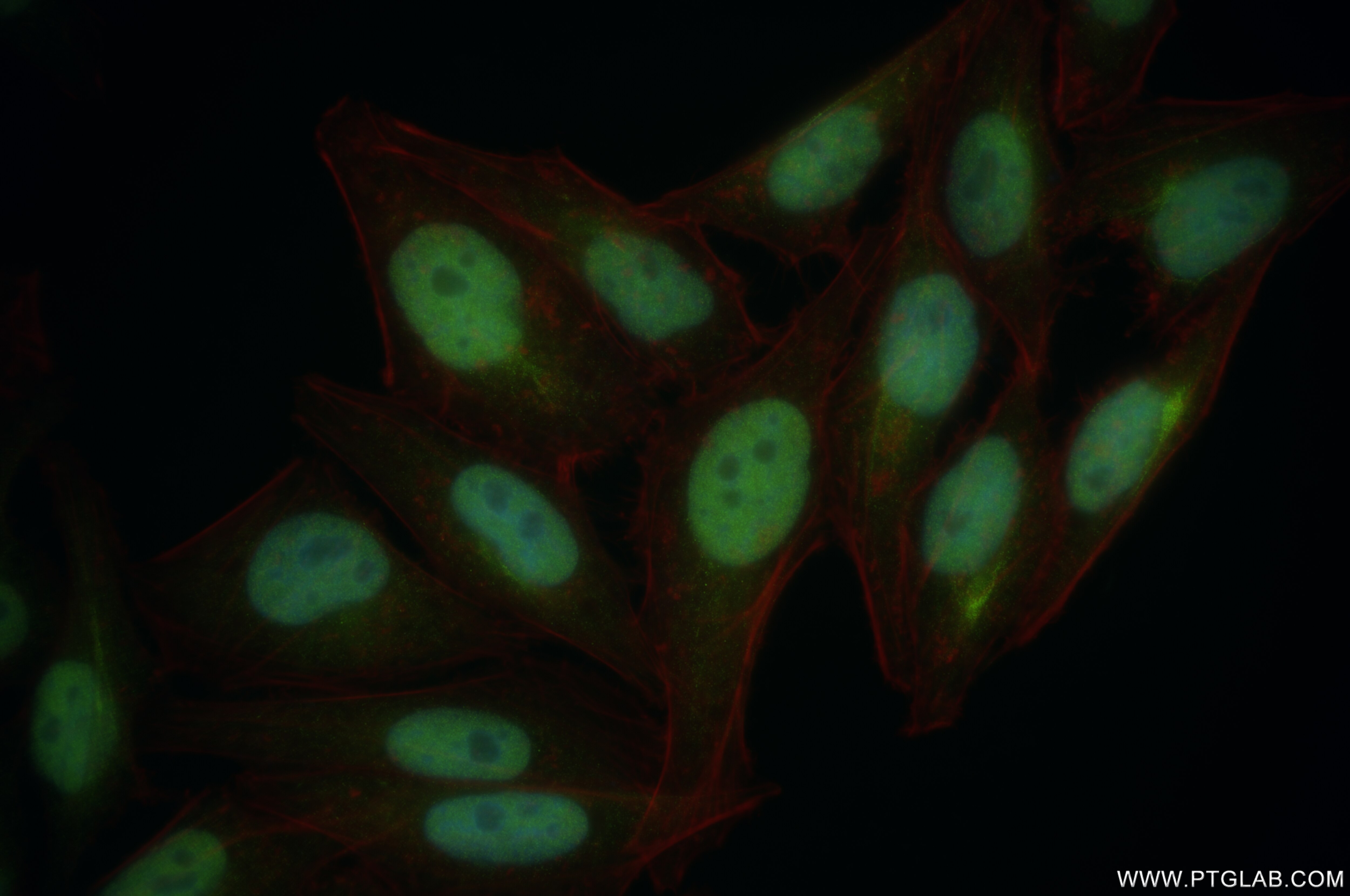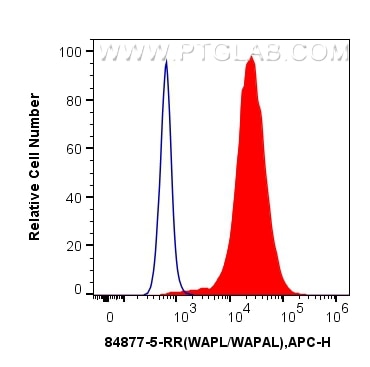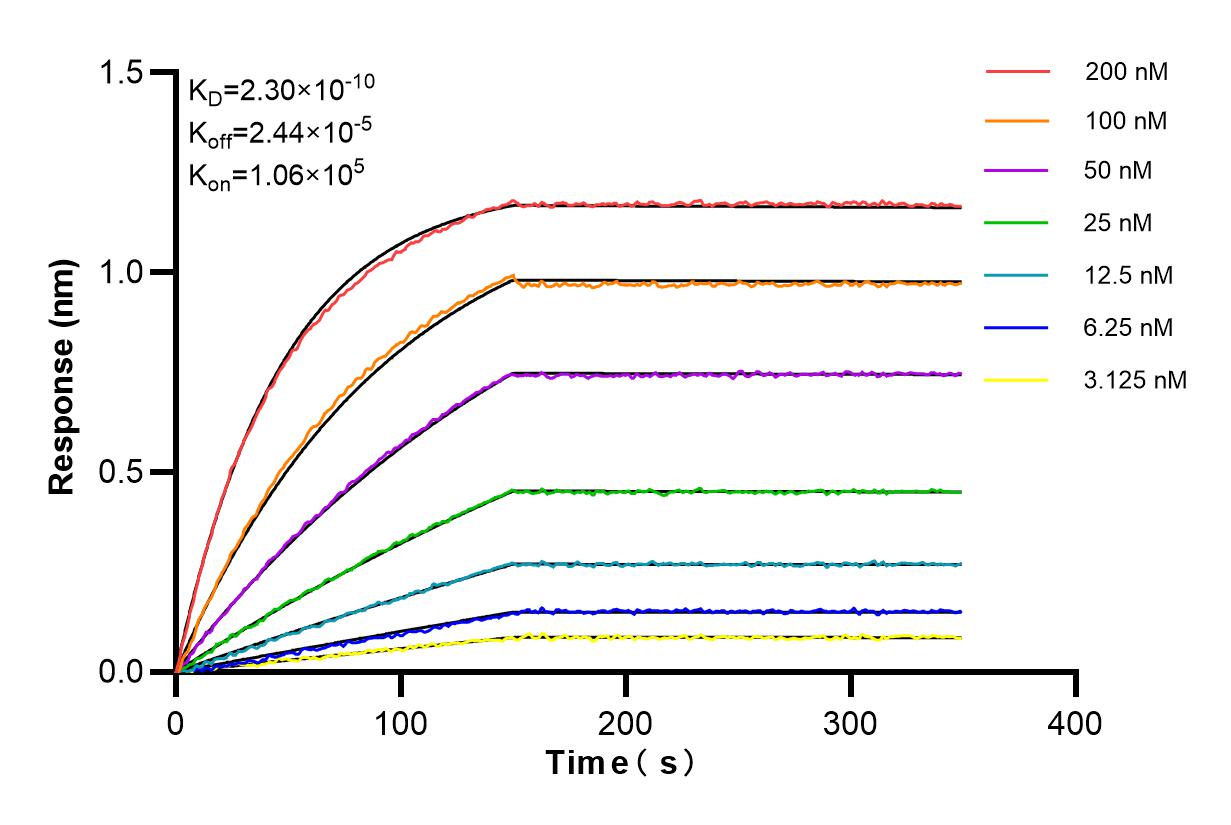Tested Applications
| Positive WB detected in | U2OS cells, MCF-7 cells, K-562 cells, HepG2 cells, HeLa cells, HEK-293 cells |
| Positive IHC detected in | mouse skeletal muscle tissue Note: suggested antigen retrieval with TE buffer pH 9.0; (*) Alternatively, antigen retrieval may be performed with citrate buffer pH 6.0 |
| Positive IF/ICC detected in | HepG2 cells |
| Positive FC (Intra) detected in | HeLa cells |
Recommended dilution
| Application | Dilution |
|---|---|
| Western Blot (WB) | WB : 1:5000-1:50000 |
| Immunohistochemistry (IHC) | IHC : 1:250-1:1000 |
| Immunofluorescence (IF)/ICC | IF/ICC : 1:200-1:800 |
| Flow Cytometry (FC) (INTRA) | FC (INTRA) : 0.25 ug per 10^6 cells in a 100 µl suspension |
| It is recommended that this reagent should be titrated in each testing system to obtain optimal results. | |
| Sample-dependent, Check data in validation data gallery. | |
Product Information
84877-5-RR targets WAPL in WB, IHC, IF/ICC, FC (Intra), ELISA applications and shows reactivity with human, mouse samples.
| Tested Reactivity | human, mouse |
| Host / Isotype | Rabbit / IgG |
| Class | Recombinant |
| Type | Antibody |
| Immunogen | WAPL fusion protein Ag9585 Predict reactive species |
| Full Name | wings apart-like homolog (Drosophila) |
| Calculated Molecular Weight | 142 kDa |
| Observed Molecular Weight | 160-180 kDa |
| GenBank Accession Number | BC017393 |
| Gene Symbol | WAPL |
| Gene ID (NCBI) | 23063 |
| Conjugate | Unconjugated |
| Form | Liquid |
| Purification Method | Protein A purfication |
| UNIPROT ID | Q7Z5K2 |
| Storage Buffer | PBS with 0.02% sodium azide and 50% glycerol , pH 7.3 |
| Storage Conditions | Store at -20°C. Stable for one year after shipment. Aliquoting is unnecessary for -20oC storage. 20ul sizes contain 0.1% BSA. |
Background Information
The wings apart-like (WAPL, or WAPAL) protein was originally identified as a gene product that potentially regulates heterochromatin organization in Drosophila melanogaster. Human WAPL is a cohesin-binding protein that promotes sister-chromatid resolution in mitotic prophase. Overexpression of WAPL disturbs mitosis and cytokinesis, and contributes to tumor progression by induction of chromosomal instability. WAPAL has a predicted molecular weight of 140 kDa, however, as a result of its extensive phosphorylation it separates on a SDS gel as a band of approximately 160-180 kDa.
Protocols
| Product Specific Protocols | |
|---|---|
| WB protocol for WAPL antibody 84877-5-RR | Download protocol |
| IHC protocol for WAPL antibody 84877-5-RR | Download protocol |
| IF protocol for WAPL antibody 84877-5-RR | Download protocol |
| FC protocol for WAPL antibody 84877-5-RR | Download protocol |
| Standard Protocols | |
|---|---|
| Click here to view our Standard Protocols |
